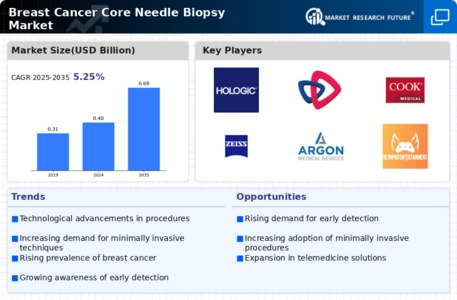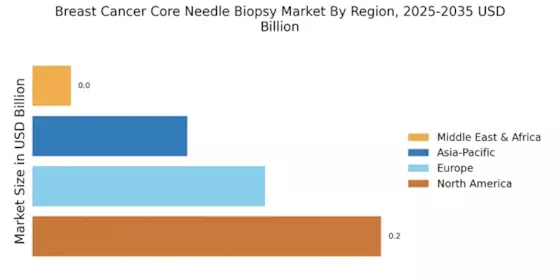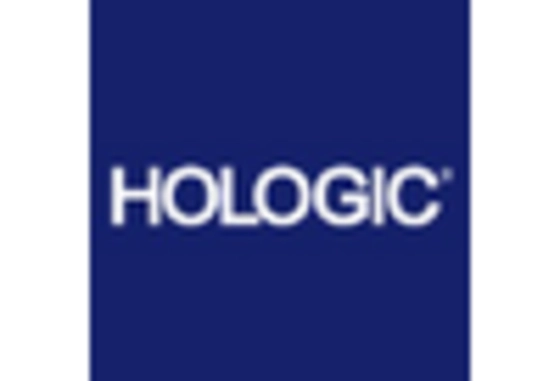Focus on Personalized Medicine
The shift towards personalized medicine is reshaping the Breast Cancer Core Needle Biopsy Market. As treatment protocols become increasingly tailored to individual patient profiles, the need for precise and accurate biopsies is paramount. Core needle biopsies provide essential information regarding tumor characteristics, which aids in the development of personalized treatment plans. The market is likely to see a rise in demand for biopsies that facilitate targeted therapies, as healthcare providers aim to optimize patient outcomes. Recent studies suggest that personalized approaches can improve treatment efficacy by up to 40%, thereby driving the need for advanced biopsy techniques that align with this trend.
Increasing Incidence of Breast Cancer
The rising incidence of breast cancer worldwide is a critical driver for the Breast Cancer Core Needle Biopsy Market. As the number of diagnosed cases continues to grow, the demand for effective diagnostic tools, including core needle biopsies, is expected to rise correspondingly. Current statistics indicate that breast cancer remains one of the most prevalent cancers, with millions of new cases reported annually. This alarming trend necessitates the implementation of efficient diagnostic methods to facilitate early detection and treatment. Consequently, the market is poised for growth as healthcare systems adapt to the increasing burden of breast cancer, ensuring that adequate resources are allocated for biopsy procedures.
Rising Awareness and Screening Programs
In recent years, there has been a notable increase in awareness regarding breast cancer and the importance of early detection. The Breast Cancer Core Needle Biopsy Market benefits significantly from this trend, as more women are participating in screening programs. Educational campaigns and initiatives by health organizations have contributed to a rise in screening rates, which, in turn, has led to a higher demand for core needle biopsies. Data indicates that regions with robust screening programs have seen a 25% increase in biopsy procedures. This heightened awareness is expected to sustain growth in the market as more individuals seek timely diagnosis and treatment.
Regulatory Support and Reimbursement Policies
Supportive regulatory frameworks and favorable reimbursement policies are playing a pivotal role in the Breast Cancer Core Needle Biopsy Market. Governments and health authorities are increasingly recognizing the importance of early diagnosis in improving patient outcomes, leading to the establishment of guidelines that promote the use of core needle biopsies. Additionally, reimbursement policies that cover the costs associated with these procedures are encouraging healthcare providers to adopt them more widely. Recent data shows that regions with comprehensive reimbursement plans have experienced a 20% increase in biopsy utilization. This regulatory support is likely to enhance market growth by making core needle biopsies more accessible to patients.
Technological Advancements in Biopsy Techniques
The Breast Cancer Core Needle Biopsy Market is experiencing a surge in technological advancements that enhance the precision and efficiency of biopsy procedures. Innovations such as ultrasound-guided biopsies and automated biopsy systems are becoming increasingly prevalent. These technologies not only improve the accuracy of tissue sampling but also reduce patient discomfort and recovery time. According to recent data, the adoption of advanced imaging techniques has led to a 30% increase in successful biopsy outcomes. As healthcare providers continue to invest in state-of-the-art equipment, the market is likely to expand, driven by the demand for minimally invasive procedures that yield reliable diagnostic results.


















Leave a Comment